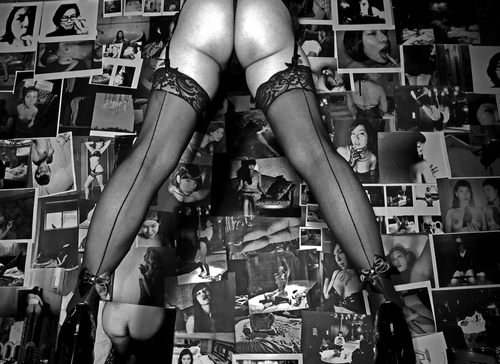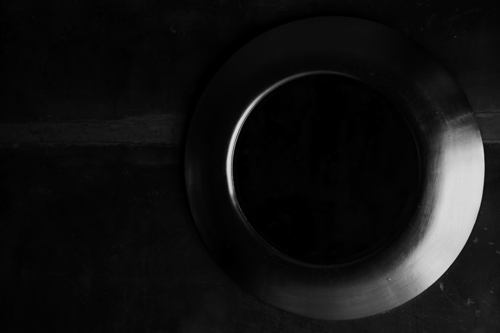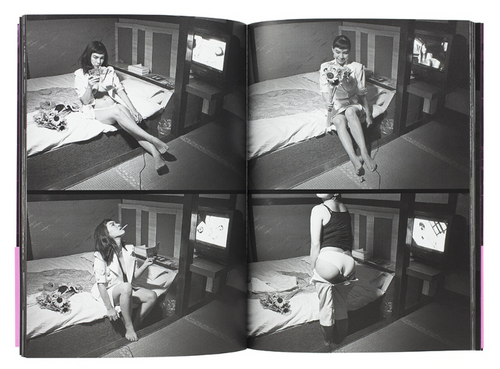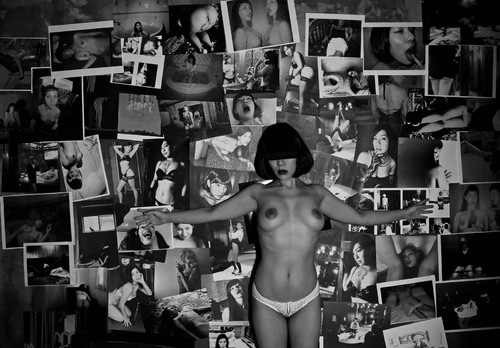Interview|Tokyo Rumando: The endless loop of the gaze

Text: Federica Sala
Edit: Sayaka Shibata, Amanda Lo
Since her debut work “Rest 3000~, Stay 5000~” was published and exhibited by Zen Foto Gallery in 2012, Tokyo Rumando has been participating in both domestic and international photography art fairs, such as Tokyo Photo, No Found photo fair and Fotofever. What’s more, her latest series “Orphee” will be presented in a group exhibition “Performing for the Camera” at Tate Modern from February 18 to June 12, showing 20 prints from the series. This exhibition, with over 50 influential artists such as Yayoi Kusama, Erwin Wurm and Cindy Sherman on display, explores the relationship between photography and performance and engages with both provocative and light topics, such as gender exploration, identity, humour and the representation of the performance by the photographic medium.
On the occasion of her participation in such an important event, Tokyo Rumando speaks about her works, her thoughts and the concepts that lay under her art, unveiling her world to the national and foreign audience for the first time. This brief interview aims to bring awareness of an unrestful world crawling under the skin of mainstream Japanese photography, where a new generation of young photographers is trying to earn the recognition they rightfully deserve.
After being photographed for many years, Tokyo Rumando takes on the camera herself and emerges in the photography world with “Rest 3000~, Stay 5000~”, a series of images taken in Japanese love hotels that combine elements of reality and fiction: the artist’s body language in the various rooms hints to both a customer and an employee, willingly blurring the outline of reality, and the eye is deceived by the realistic element of a quasi-documentary style and the artificiality of the self-portrait, suggested by the occasional appearance of the timer. In the autumn of 2014, she published her new series “Orphee”, accompanied by a new book of the same title, published by Zen Foto Gallery. In this work, the artist (un)dresses up in front of a giant round mirror, facing all the memories, projections, fears and desires reflected behind its surface. The sequence of images shows different women, who are yet the same person, challenging the meaning of identity without a real desire to question it: from the figure in front of the mirror to the images reflected within, everything is part of the same whole, and the boundaries between inside and outside almost disappears. The mirror tells tales, but the artist is no Snow White nor the Evil Queen. Or maybe she is both.
Q: You worked for a long time as a model. Did your experience in front of the camera somehow influence your decision to start taking pictures of yourself?
A: There is an influence, but it comes more from hiding in the underground world in my twenties than from my experience as a photographic subject.As a model, I’ve been posing following the directions and the expectations of the photographers, but then the energy was concentrated only on the result they were trying to pursue.I don’t know why, but I felt like I was gradually being consumed. Perhaps it’s because the photographic set was a battlefield, and I started taking pictures myself in order to take back again the power I was fighting over with the photographers. To me, photography is a place where my troubled mind can rest, like going to the hot-springs. I am finally able to take self portraits however I like and also to find some inputs to rebuild a new self.


Q: What changes in terms of gaze between a picture taken by a photographer and a picture taken by yourself?
A: Speaking as an artist, I’d say I don’t want to use the same gaze of when I was a model. The gaze you use for your own pictures makes you unaware of yourself as a person, as you avert your eyes or face away from the camera. But all of this is still a riddle to me. The images that occur into my head, vague and obscure, come out just like that:those expressions are spontaneous, but you also might say they emerge from my experiences.
Q: At the end of Orphée (the photobook) there are a lot of scribbled kanji, among which the wordfukusha, copy, stands out. The mirror itself suggests the same idea of copy, working as a boundary between two worlds. Which side reflects the truth?
A: In this book there’s no such thing as truth, and to speak frankly, I have no interest in it. I do use the mirror as a chronological border between past, present and future, but as I am both the one in the mirror and the one in front of it, there is no real boundary. That means thatpast and present coexist ceaselessly in me, maybe because they are the core of my own self. Without past, today’s Tokyo Rumando wouldn’t exist, right? All of the persons in the mirror are the real me, but reality is not something I am seeking in this work.


Q: Moving the topic to your influences, in the pictures of your work “Rest 3000~, Stay 5000~” many would easily point out some themes and techniques typical of Araki’s unmistakable style.
A: I’ve been said that a lot. “That’s so like Araki!” Could that be because the setting is love hotels? Or could it be because I’m on a bed? Anyway, I think there is a difference in the gaze behind a picture taken by a man and one taken by a woman. Since my photos are self-portraits, I think it’s obvious that they are different from Araki’s.
Q: Did working with Araki, even as a model, somewhat influenced your photography?
A: I did work for Araki as a model, and I definitely like him a lot. I always get motivated by other photography styles. Besides being influenced or not, I like artists like Cindy Sherman, Molinier, Witkin and Irina Ionesco. I always wanted to fill my photos with madness, but they lacked that sense of insanity if taken singularly. So, I decided to take hundreds of photographs with such a mad pattern, and cramming them all in a single space, made delusional by the pressure. I want that to be my style. Also,humour is very important. Having fun as a creator comes before anything else.
Q: What does being naked mean to you?
A: The slogan “I’m only happy when I’m naked” is a keyword for both my series. Changing yourself in order to fit with other people and the circumstances has become quite the norm today, and it’s not just about clothes and make-up. We keep on putting on more and more masks, but the true liberation stands in stripping them off and getting close to the slightest piece of skin underneath. Even though many of these masks are a burden and I’d like to take them off, I cannot get rid of them that easily as long as I live. I feel like they are necessary to survive in this society. Perhaps some of these masks are even comfortable, but it might just be that we are generally afraid to take them off. Thus, you can say this slogan is my everyday prayer.


Q: In the afterword from Orphee, the critic Soma Toshiki wrote that “the artist must face the deep abyss even at the price of great loss; even were it to result in mortal danger, the artist must not suppress the desire to look.” Since the images in the mirror are your memories, your experience and yourself, did you feel a sense of loss when looking at them? Or did you find something, instead?
A: I think I’ve been constantly losing some important parts of my life until now, and at the same time I keep finding and picking up something else. Letting go is a choice, although it might also come unexpected of course. But, when I was looking in the mirror, I didn’t feel a sense of loss, it was more like an input of some sort.
At first, I named this series “Projection⇔Introduction”. When I was thinking about how I could look back into the past, I was shaping my inner self again, projecting it on a picture and once again reintroducing it inside.Rather than finding, I’d say I was receiving something. After all life is an endless loop, an action everybody performs unconsciously, so I don’t think I’m doing anything special here. The only strong desire I had was to give that a shape.You force back the past inside yourself and still it runs deep within you. The past never goes away.

Tokyo Rumando
Born in 1980. Based on the experience of modeling for movies and magazine, started photography herself since 2005. Mainly photograph her self-nude portraits or portraits of rakugo (literally “fallen words”) artists. www.rumando.com